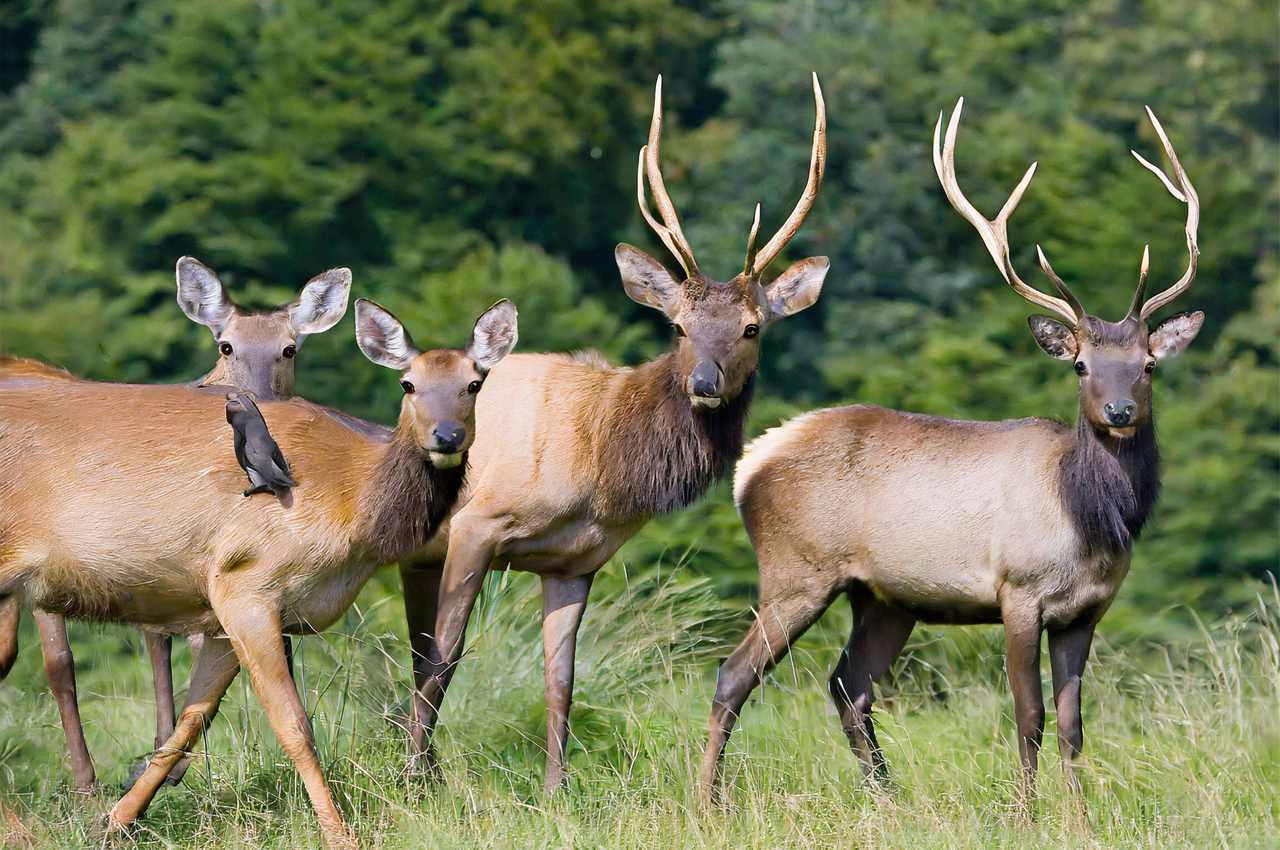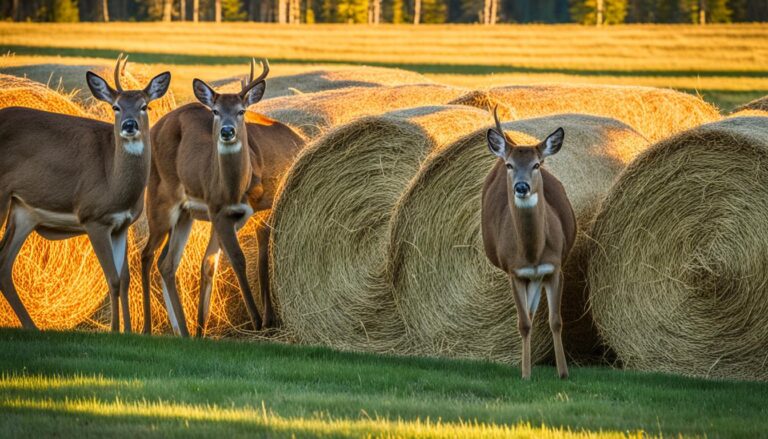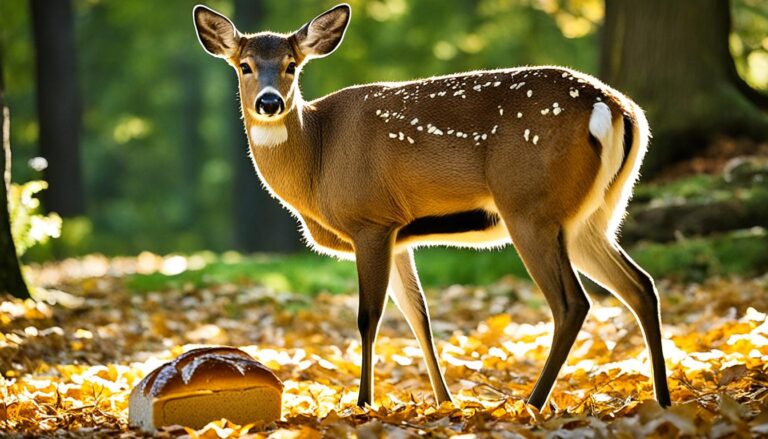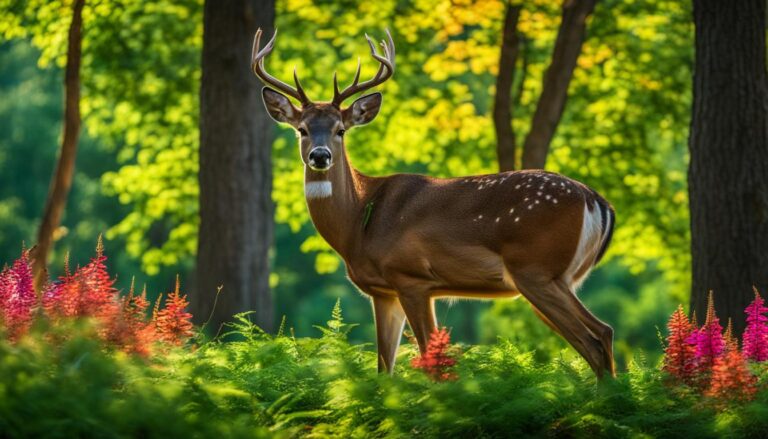Deer Vs Elk: The Differences May be Surprising To You!
Key Takeaways:
| Feature | Deer | Elk |
|---|---|---|
| Size | Smaller, typically weighing between 100 and 300 pounds | Larger, typically weighing between 400 and 800 pounds |
| Antlers | Smaller and more delicate, with fewer branches | Larger and more robust, with more branches |
| Tail | White-tailed deer have a white tail, while mule deer have a black-tipped tail | Elk have a short tail with a creamy white rump patch |
| Habitat | Deer are found in a variety of habitats, including forests, mountains, swamps, and grasslands | Elk are typically found in open areas, such as meadows and grasslands |
| Social behavior | Deer are typically solitary animals, but they will gather in groups during the breeding season | Elk are social animals that live in herds of up to 1,000 individuals |
| Diet | Deer consume a wide range of vegetation, such as fruits, nuts, twigs, and leaves. | Sedges, forbs, and grasses are among a number of vegetation that elk consume. |
| Predators | Deer are preyed upon by a variety of animals, including wolves, coyotes, cougars, and bobcats | Elk are preyed upon by a variety of animals, including wolves, coyotes, and mountain lions |
Size and Weight Comparison: Deer Vs Elk
| Species | Height (feet) | Weight (pounds) |
|---|---|---|
| Elk | Over 5 | Generally Up to 800, but some males may weigh up to 1,100 pounds |
| Deer | 3.5 | Up to 300 |
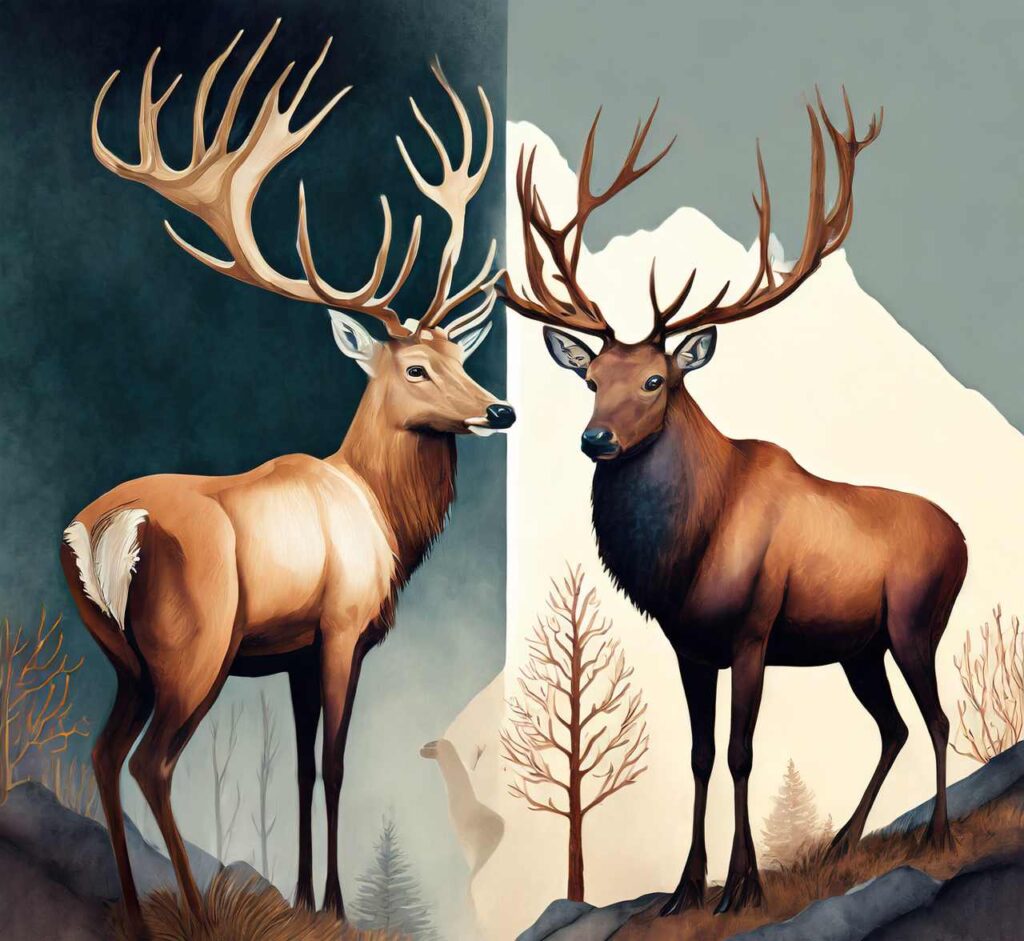
Antler Comparison: Elk vs Deer
“Elk antlers are like majestic crowns, with their size and complexity commanding attention. Deer antlers, although more modest, still possess a unique beauty that complements the gracefulness of these creatures.” – Wildlife Expert
The Evolutionary Significance of Antlers
| Elk | Deer | |
|---|---|---|
| Antler Size | Larger and more complex | Smaller and simpler |
| Antler Length | Up to 4 feet | Shorter, usually a few feet |
| Antler Spread | Four to five feet | Limited spread |
| Antler Structure | Branching with multiple points or tines | Single main beam with one or two points |
| Texture | Rough, textured | Smooth |
Habitat and Behavior Analysis: Deer Vs Elk
Habitat Preferences
Feeding Behavior
Social Structure
In their ecosystems, deer and elk have different social structures that shape their behavior. Elk live in bigger herds that split into cow–calf and bull herds over the seasons and are more gregarious. Male elk build harems and fight for supremacy during the rut. Deer are more solitary than elk, with smaller family groupings of does and bachelor groups of males. Bucks segregate does from other males during breeding season. During mating season, elk bugle, whereas deer use body language and scent marking. Due to these social dynamics, deer and elk live differently in their ecosystems.

Ecological Impact: Deer Vs Elk
Elk Population and Impact
Deer Population and Impact
Comparing Elk and Deer Impacts
| Ecological Impact | Management Strategies | |
|---|---|---|
| Elk | Control vegetation growth, prevent overgrowth, maintain ecosystem balance | Hunting programs, habitat management |
| Deer | Stimulate vegetation growth, promote biodiversity in forests | Regulated hunting, habitat restoration |
Conclusion
Deers and elks are similar in appearance but are distinct in size, social behavior, habitats, and diets. Deers are generally smaller in size, weighing between 100 to 300 pounds, while elks can weigh up to 1,100 pounds. Elk antlers are also larger and more robust than deer antlers, with up to 12 points compared to deer’s maximum of 6 points. Deer are also more adaptable to different habitats, ranging from forests to swamps, while elks prefer open areas like meadows and grasslands.
Socially, elk are more gregarious, living in herds of up to 1,000 individuals, while deer tend to be more solitary. These differences reflect their respective diets: elks are grazers, consuming mostly grasses and sedges, while deer are browsers, feeding on various plants, including leaves, twigs, fruits, and nuts.
Both elks and deer play crucial roles in their ecosystems, both as grazers or browsers and as prey species for predators. They also hold economic significance, as sources of meat, antlers, and hide, and as popular game animals.
In conclusion, while both deer and elks are members of the Cervidae family, they exhibit distinct characteristics, each contributing to the diversity and richness of the natural world.
1. What distinguishes elk from deer primarily?
Elk and deer, both Cervidae, vary despite their common ancestry. Elk are larger than deer, with males (bulls) reaching 400–1,100 pounds and females (cows) 460–500 pounds. Deer average 100–300 pounds. Elk antlers are bigger and stronger than deer antlers, with more branches.
2. Where do deer and elk typically live?
Deer are more adaptable to different habitats than elk. They can be found in forests, mountains, swamps, and grasslands. Elk, on the other hand, are typically found in open areas, such as meadows and grasslands.
3. How do the social structures of deer and elk differ?
Deer are less social than elk. Elk herds may number up to 1,000. Aside from breeding season, deer remain alone. Cervidae (deer and elk) socialize based on their ecological responsibilities. Elk migrate in sex-specific groups in spring and summer, with bulls active in fall ruts. The largest bulls hide their harems. Elk spend the winter in large groups after the rut. The mating season bugling cry highlights their social dynamics. However, deer establish smaller doe and stag families. Buck isolate mating occurs during the rut. Body language and scent marking are deer’s main communication methods. Elk prefer broad environments and are herd-centric, whereas deer are more flexible and solitary.
4. What are the primary dietary differences between deer and elk?
Elk are grazers, consuming mostly grasses and sedges. This diet provides them with the necessary nutrients to support their large size and active lifestyle. Deer, while also consuming grasses, are more versatile browsers, feeding on a variety of plants, including leaves, twigs, fruits, and nuts.
5. What predators are common threats to deer and elk?
Both deer and elk are preyed upon by a variety of animals, including wolves, coyotes, cougars, and bobcats. Elk, due to their larger size, are less vulnerable to smaller predators like coyotes and bobcats.
6. How do deer and elk vocalize?
Elk express more expressively than deer. Elk groups communicate by their resonant bugling cries. Instead of talking, deer use body language and occasional snorts and grunts to communicate.
7. What economic roles do deer and elk play?
Elk and deer play important economic roles. Elk are valued for their meat and antlers, and their position as game animals increases their economic worth. Deer are also commercially significant as hunting animals, as well as for their meat and skins. These species contribute across industries, indicating their value in a variety of markets.
8. How do deer and elk shed their antlers?
Both deer and elk shed their antlers every year. This process is called antler shedding, and it typically occurs between late winter and early spring. The antlers are shed at the base where there is no bone or nerve tissue. The shedding process is triggered by a drop in testosterone levels, which causes the bone at the base of the antler to weaken and eventually break.
9. How long do deer and elk live?
Elk live longer than deer. Elk are noted for their lengthy lifespans, lasting 14 to 18 years, often 15 years and sometimes 16 to 18. However, deer, especially whitetail deer, live 10 years or less. Both species’ lifespans are affected by species variety, habitat conditions, and environmental influences. Overall, elk live longer than deer.
10. What are some interesting facts about deer and elk?
Elk and deer, intriguing Cervidae, have different traits and behaviors. Elk, commonly known as wapiti, are North America’s second-biggest terrestrial mammal and one of the largest deer species. A noteworthy subspecies of Rocky Mountain elk lives there. Elk create herds year-round, including cow–calf and bull herds throughout various seasons. Elk are the noisiest North American deer, known for their rutting season bugles. These remarkable creatures can jump eight feet and reach 40 mph. However, calm deer are good swimmers and fast runners when fleeing danger. Irish elk, now extinct, were the biggest deer. Deer use camouflage to avoid tigers, lions, and coyotes. These interesting facts highlight deer and elk’s distinct traits and ecological importance.
- Wyoming Deer Season 2025-2026 New Schedule & Rules - 15 September 2025
- Wisconsin Deer Season 2025-2026: WI Deer Hunting Guide [Schedule, Rules, Licenses] - 15 September 2025
- West Virginia Deer Season 2025-2026 Complete Date & Guide - 15 September 2025
